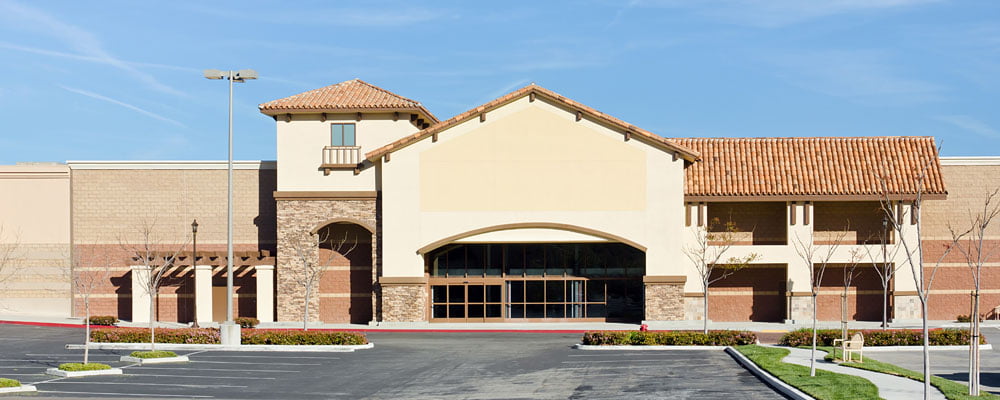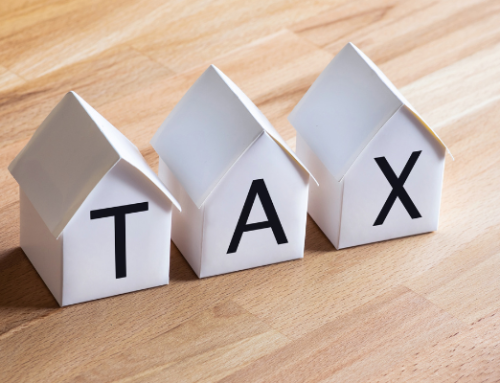Retail rental tenants like brick-and-mortar stores and restaurants had a tough year in 2020. Many had varying levels of success by shifting to online platforms, though not everyone was able to quickly adapt. Digital trends that were innovative or nice-to-have in early 2020 (like contactless ordering and payment) became the difference between surviving, thriving, or going under. Even after months of pandemic restrictions, the 2020 holiday season further exposed weaknesses in retail rental real estate operations and supply chains.
The ongoing COVID-19 pandemic continues to complicate recovery. The retail sector has been affected in different ways; some retailers experienced record-high profits while others were forced into bankruptcy. Industry-wide, challenges ranging from recruiting and retaining staff, supply chain disruptions, and tech infrastructure have been coupled with lower consumer spending and continued pandemic mitigation efforts.
Yet, with all the change comes opportunity. It has become evident that the in-person retail experience is not dead yet. Non-traditional and specialty retailers are taking advantage of market conditions to explore physical storefronts. Resiliency and resourcefulness can be seen everywhere. And a way forward is becoming clearer.
Pre-Pandemic Trends Affecting Rental Retail
If anything, COVID-19 helped to accelerate trends that were already shaping a changing industry. E-commerce was growing but not substantially. Pre-pandemic, about ten percent of retail sales were conducted online; now, it’s around 60 percent. Foot traffic and sales at traditional malls had been declining for several years; since apparel was one of the hardest hit sectors, malls continued to decline in 2020 alongside their clothing tenants.
Consumer spending habits have changed, as well. Pockets of convenience-based services like curbside pickup, pickup in store, and delivery options popped up nearly everywhere as consumers stayed home.
Some of these trends, especially those that favor consumer choice and convenience, are permanently shaping the industry’s future. Retailers that haven’t done so yet need to adapt and remain flexible. A few ways that retailers can remain viable are to:
- Leverage existing space for better inventory management and fulfillment.
- Strengthen relationships with lending and financing partners.
- Expand supply chain networks with local and non-traditional resources.
- Evaluate options to negotiate lease terms.
Especially for smaller retailers, their ability to negotiate lease terms with landlords and loan terms with creditors have been keys to their survival. Going forward, it will be important for retailers to adapt to higher competition, different consumer shopping trends, and e-commerce, knowing that while some trends have been accelerated, other temporary shifts (like consumer attitude) will become permanent.
COVID-19’s Impact on Retail Vacancy Rates and Rents
Retail vacancies have substantially increased as a result of COVID-19. At the beginning of 2020, the average vacancy rate hovered around 4.5 percent; but by the end of the year, it rose to 5.4 percent. It is projected to rise again in 2021 to as high as 6.2 percent. Before the pandemic, retail rent rates were increasing by about two percent each year; now, rents are expected to decline one to three percent in 2021.
Retail tenants’ ability to pay rents on time experienced was severely curtailed during the early stages of the pandemic. In early March, for example, around 91 percent of lessees were current on their rent. Once the pandemic hit the United States and governments began mandating shutdowns, only 54% of retail tenants were current. Towards the end of 2020, when some jurisdictions began easing some of their restrictions, the on-time rent percentage increased back up to approximately 85%
As more tenants were unable to pay their rent and landlords were forced to agree to aggressive lease concessions, landlords’ financial positions worsened, too. Simon Property Group, for example, lost 16 percent of lease income in the first nine months of 2020.
Landlords that must account for rent concessions on their own books have new guidance that may help to conserve cash flow – read more here.
Bankruptcies also increased in 2020. More than 60 large retailers, including some publicly listed malls, entered bankruptcy proceedings. At the same time, more than 12,200 stores closed nationwide. The result? 159 million square feet of retail space is back on the market.
The effect of this much vacant space is – or will be – an overall real estate devaluation in many major cities. Some real estate analysts have noted that upscale retail space is demanding lower rent while less desirable spaces are experiencing higher than average vacancy rates.
Lease Structure Considerations and Changes
To avoid the financial fall-out of letting mass numbers of lessees default on their rent, many commercial landlords have granted rent relief in various forms. Absent formal contract language for force majeure and other rent relief scenarios, property owners have made exceptions to:
- Lower rents temporarily or permanently,
- Extend or shorten lease terms,
- Forgive past due payments, and to
- Grant other concessions related to use of space, upgrades, and so on.
To landlords, accepting lower rents and adjusting lease terms are better alternatives than losing large numbers of lessees. For malls and shopping centers, the threat of higher tenant vacancies can have a ripple effect with other tenants, landlord debt, or both. Landlords that can’t quickly or easily replace tenants have been in the worst position for lease negotiations, according to the Wall Street Journal.
In one case study, a nationwide real estate advisory firm won 77 percent of lease concessions in 2020 compared to around 50 percent in normal years.
New COVID-19 Relief Legislation
The Consolidated Appropriations Act contained more COVID-19 financial relief for many in retail real estate. The Paycheck Protection Program (PPP) was replenished, with additional funds for restaurants and hospitality.
Specific to retail, new funds aimed at helping independent movie theaters, live entertainment venues, and cultural centers should help to avert total closures and increase overall retail traffic. More unemployment aid is expected to contribute to continued consumer spending.
For retail businesses in or considering bankruptcy, welcome news:
- Amended Section 364 of the Bankruptcy Code to allow businesses in bankruptcy to apply for PPP funds;
- Granted an extra 60 days (up to 120) under the Bankruptcy Code to fulfill post-petition lease obligations under the terms of an unexpired non-residential real property lease, effectively giving the bankrupt business a four-month reprieve from rent;
- Granted an extra 90 days (up to 300) to assume or reject unexpired non-residential real property leases;
- Removed the requirement of a security deposit or other payment assurance to prevent utility shut-offs; and
- Deferred or delayed rent and supplier payments are protected from claw backs if agreements were made on or after March 13, 2020 (fees, penalties, or interest are excluded).
More information on the Act is available here.
2021 Retail Trends and Predictions
There are bright spots and opportunities to both mitigate losses and look to the future. For struggling shopping malls, there is a growing trend of retailers turning to ownership. Retailers in this scenario are typically either:
- Luxury
- Specialty
- Grocery
For example, a home furnishing company bought a mall in Stamford, CT, where it plans to open a home design center and relocate its existing storefront. The popular teen video game FortNite has been exploring buying a vacant mall to use as its new headquarters, office, and recreation space.
Consider shopping centers with large grocery stores as anchors, where the grocery store’s real estate arm also owns the entire development. This has been more of a traditional real estate strategy, but one that helped control the financial fallout that other shopping centers experienced.
Other retailers are working with landlords to retrofit or renovate existing spaces.
Class B and C malls are prime targets for “adaptive reuse and conversion.” Mall owners’ typical strategy of relying on tenant leases will need to be re-examined in the next few years. Commercial property research points to adaptive reuse of malls as industrial complexes as an early option. Other uses of vacant or converted mall spaces could include, depending on the property:
- Healthcare/Medical
- Education and Cultural
- Office Space
- Hotels
- Multifamily
- Open Space
In many of these cases, mall owners will need to further explore zoning, permitting, and regulatory issues.
CBRE is predicting a rebound for brick-and-mortar retail stores in 2021 alongside a decline in e-commerce sales growth. To make this happen, expect some of the vacancies to be reabsorbed as retailers look to property ownership as well as adapting how existing spaces are used. Fueling this projected upturn will likely be private capital versus institutional lending, as traditional banks are re-evaluating their investments and risk portfolio. Mall REITs are also expected to consolidate to maintain liquidity.
Why the expected decline in e-commerce growth? As CBRE points out, the current surge is unsustainable in the long-term. It’s already stabilizing. There are operational and logistical challenges for fulfilling and shipping e-commerce sales on such a large scale. Plus, brick-and-mortar retail offers a different, often more personal experience that cannot be replicated online. With that in mind, retail spaces still need to account for continued demand for curbside pickup or buy-online/in-store pickup as consumers wait out the pandemic.
Retail real estate growth is expected from new concepts and new players to physical storefronts. Health and wellness and outpatient healthcare centers can help to reabsorb some of the vacancies left by bankrupt large retailers. Amazon’s foray into physical real estate with its various brands will likely influence other online-native platforms to explore retail space. Grocery stores, pet services, convenience stores, and quick-service restaurants are all retails sectors poised for growth in 2021 and 2022.
In the most resilient retail real estate sectors, cap rates could become more compressed in the short-term as demand is up, supply is down, and debt is available.
Read more about the effect of COVID-19 on cap rates.
Going forward, there is (and perhaps always will be) a balance between e-commerce and in-person retail experiences. Those who entered the pandemic on solid financial footing have often found ways to use the current market to their advantage.
The challenge for investors, owners, and tenants is getting through several more months of economic and financial uncertainty. Collaborating with expert outside advisors like PBMares’ Real Estate team can make the difference; knowledgeable advisors can help real estate stakeholders spot opportunities, plan for uncertainty, mitigate losses, and prepare for the future.
Questions or comments? Contact us today.





